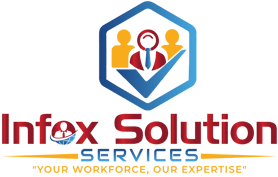7 Essential HR Metrics for Business Success: A Comprehensive Guide
10/31/20232 min read


In the ever-evolving world of human resources, data-driven decision-making has become the cornerstone of organizational success. HR professionals are no longer just responsible for hiring, training, and employee relations; they are key players in ensuring a business's strategic goals are met. Central to this transformation is the use of HR metrics - vital measurements that guide HR strategies, uncover trends, and quantify the impact of HR initiatives on an organization's bottom line.
In this comprehensive guide, we will explore seven essential HR metrics that are indispensable for achieving business success and how they contribute to the growth of your organization.
1. Employee Turnover Rate
"Reducing Employee Turnover Rate for Better Business Success"
Employee turnover is a critical HR metric that impacts productivity, morale, and costs. A high turnover rate can be a sign of underlying issues, and by tracking this metric, HR professionals can uncover reasons for attrition and work on strategies to reduce it.
2. Time-to-Fill
"Optimizing Time-to-Fill for Faster Business Growth"
Time-to-fill measures how quickly a job vacancy is filled. It is crucial for minimizing productivity losses, ensuring staffing efficiency, and delivering a positive candidate experience. Reducing the time-to-fill rate can lead to a competitive edge in attracting top talent.
3. Cost-Per-Hire
"Lowering Cost-Per-Hire to Boost Business Profits"
Cost-per-hire measures the expenditure incurred during the recruitment process. Optimizing this metric reduces recruitment expenses and frees up resources for other HR initiatives. By calculating cost-per-hire, HR can make informed decisions on the allocation of recruiting budgets.
4. Employee Productivity
"Maximizing Employee Productivity for Business Growth"
Employee productivity metrics help organizations understand how efficiently their workforce operates. By tracking these metrics, HR can identify underperforming areas and implement strategies to improve productivity, ultimately contributing to the company's growth.
5. Absenteeism Rate
"Reducing Absenteeism Rate for Improved Business Stability"
Absenteeism can disrupt business operations and increase costs. HR metrics related to absenteeism help in identifying patterns, addressing potential issues like burnout or dissatisfaction, and implementing preventative measures.
6. Employee Satisfaction and Engagement
"Boosting Business Success Through Employee Satisfaction and Engagement"
Engaged employees are more productive and stay with their organizations longer. HR metrics that measure employee satisfaction and engagement provide insights into how well the company is performing in terms of employee well-being and morale.
7. Revenue Per Employee
"Increasing Revenue Per Employee for Business Profitability"
Measuring revenue generated per employee can help businesses understand how efficiently they are utilizing their workforce to drive revenue growth. A higher revenue per employee is a positive indicator of productivity and profitability.
Utilizing HR Metrics for Business Success
Long gone are the days when HR was primarily an administrative function. HR metrics empower HR professionals to be strategic partners, influencing organizational success. By consistently tracking and analyzing these metrics, businesses can make informed decisions, optimize processes, and create a more productive and engaged workforce.
As you embark on your journey toward business success, remember that the metrics you choose to measure will depend on your specific business goals and needs. A combination of these essential HR metrics can pave the way for a thriving and prosperous future, where HR is not just a department but a strategic driver of success.


